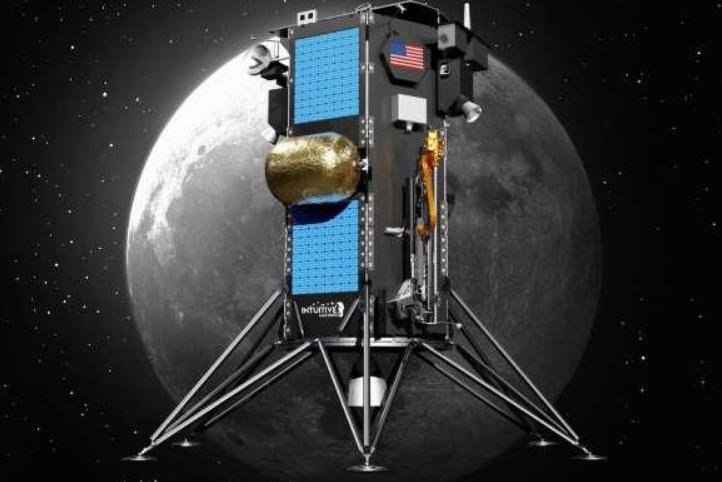A SpaceX Falcon 9 rocket successfully launched Intuitive Machines’ Nova-C lunar lander from Kennedy Space Center in Florida on Feb. 15, 2024. The lander, which is part of NASA’s Commercial Lunar Payload Services (CLPS) initiative and Artemis campaign, will deliver a suite of NASA science instruments and technology demonstrations to the Moon.
The Nova-C lander, which is the first lunar mission by Intuitive Machines, a Houston-based company, will carry five NASA payloads and several commercial payloads to the Moon. The lander will touch down on a flat area near the lunar equator, called Oceanus Procellarum, or Ocean of Storms, where it will operate for about two weeks.

The NASA payloads on board the lander include:
- Lunar Node 1 Navigation Demonstrator: A small experiment that will test autonomous navigation and communication technologies that could be used by future landers, rovers, and astronauts on the Moon.
- Lunar Surface Electromagnetics Experiment (LuSEE): A set of sensors that will measure the electric and magnetic fields on the lunar surface, and how they are affected by space weather and lunar dust.
- Lunar Surface Exosphere Dynamics Experiment (LDEX): A camera that will capture images of the faint cloud of dust and gas above the lunar surface, and how it changes over time and location.
- Stereo Cameras for Lunar Plume-Surface Studies (SCALPSS): A pair of cameras that will record the landing plume of the Nova-C lander, and how it interacts with the lunar surface and dust.
- Lunar PlanetVac: A device that will collect a small sample of lunar soil using compressed gas, and transfer it to a container for analysis.
The commercial payloads on board the lander include:
- Celestis Luna 03: A memorial flight that will carry the cremated remains of more than 100 people to the Moon, including the ashes of actor James Doohan, who played Scotty on Star Trek.
- CubeRover: A miniature rover that will demonstrate mobility and navigation capabilities on the lunar surface, and provide imagery and data to the lander.
- Lunar Library: A disc that will store a digital archive of human knowledge and culture, including the Wikipedia, the Rosetta Project, and the Long Now Foundation.
- Moon Mark: A competition that will allow high school students to design and race two remote-controlled rovers on the lunar surface, using the CubeRover platform.
Nova-C Lander Supports NASA’s Artemis Campaign and CLPS Initiative
The Nova-C lander is part of NASA’s Artemis campaign, which aims to land the first woman and the first person of color on the Moon by 2024, and establish a sustainable human presence there by the end of the decade. The lander will provide valuable data and insights into the lunar environment and resources, as well as test technologies that could support future human exploration.
The Nova-C lander is also part of NASA’s CLPS initiative, which contracts with commercial companies to deliver science and technology payloads to the lunar surface. The initiative leverages the capabilities and innovations of the private sector, and reduces the cost and risk for NASA. The Nova-C lander is the second CLPS mission to launch, following the Astrobotic’s Peregrine lander, which launched in December 2023.
The Nova-C lander is expected to reach the Moon in about six days, and will communicate with the Intuitive Machines’ mission operations center in Houston, as well as with NASA’s Deep Space Network. The lander will also carry retroreflectors, which are devices that reflect laser beams, and will contribute to a network of location markers on the Moon for navigation and communication purposes.
















